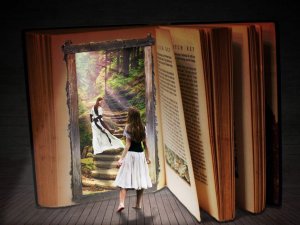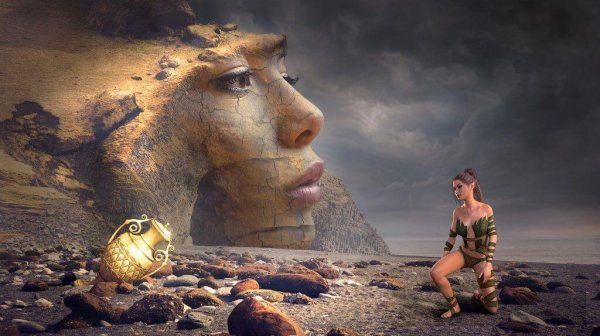The Hero's Journey and the Archetypes of Migration

The creator of analytical psychology, Swiss psychiatrist Carl Jung, proposed that we can understand mythical narrations of journeys about new beginnings, such as those of Marco Polo, Ulysses, or Hercules, as symbolic expressions of a mental transformation that all people are destined to go through in life. Jung called this process the hero’s journey, or the process of individualization.
The hero’s or heroine’s journey tends to start with a call or a need to abandon the ordinary, known world. It is a call that will reveal the hero’s true life and potential.
In mythology, heroes tend to emerge in unstable times, like when social norms collapse or during political or religious crises. Along the same lines, in our personal life, we may be feel stuck in circumstance, stagnant and maybe anxious. This is when life may force us to take a transformative journey.
The hero’s journey is a symbolic journey; it is possible to do it without physically moving. Life may call for a journey by giving you a job offer or a scholarship. Life may give you a chance to improve economically, educationally, or socially.
The treasure hunt
The hero’s journey is mythically represented as a search. For a treasure, a promised land, the philosopher’s stone, the holy grail, a marriage between a prince and a princess. Each person has an ideal or object that they’re searching for. However, more often than not, the traveler comes across surprising treasures they never imagined.
Sometimes, before beginning the journey the hero stumbles into some situation (maybe through people, books, movies). A situation that, little by little, help them choose their final destination. To Jung, these coincidences were synchronicities. He considered them to be an expression of the existing relationship between the physical world and the mental world.
This journey usually results in a figurative new birth. We now have new courage and humility that we developed by overcoming obstacles along the way. The hero’s journey is a process that involves moving from certain stages of life in order to be reborn in others. We can understand moving between stages as moving from one archetype to another.

Archetypes or stages of the hero’s journey
Archetypes are characters in myths that go through typical human situations. The experiences are needed for the hero to go through their journey to fulfillment.
A person on a migratory journey may go through these 4 archetypes or stages:
The Innocent archetype
This stage refers to the security and familiarity of where we start out. It is an environment that at some point becomes too small and suffocating, pushing us to embark on our transformative journey.
Here, we also find idealized expectations about ourselves or the goal of our journey. For example, maybe we assume that our foreign language fluency is better than what we later find it to be. Perhaps we believe the fantasy that something or someone is going to provide for us. Or maybe we believe that the job we need will fall from the sky.
This is a period of false illusions. They’re stories that we tell ourselves about how things would be if we pursued our dreams. If we knew how it really would be along the way, it would be far more difficult to motivate ourselves to take the first steps. This stage also is like a “honeymoon stage”. We fall in love with the place we will journey to.
When we finally confront the concrete reality of what it takes to reach the end of our journey, the curtain that kept us from seeing any negativity falls down. From here, we move on to the next archetype, the orphan, in which much of what we imagined during the innocent stage vanishes.

The orphan archetype
At some point in the journey, it’s normal to be forced to do things we never imagined doing. We must get along with people and customs that surprise us. Here, there is a kind of fall, a descent that the Greeks called katabasis.
To a foreigner, a new culture may be like a disorienting maze. Our firmly held beliefs may falter. We may begin to question many things that we once considered “normal”.
It is a stage of yearning. A feeling that maybe what we’re doing doesn’t matter. At this stage, usually we idealize our memory of where we came from. We are greatly tempted to give up on our journey.
Here’s another key part: when we find ourselves in a foreign country (whether physically or symbolically), the people there have never seen us before. This gives us flexibility in our identity. It gives us the opportunity to explore new facets of ourselves and feed off of the change.
We can go through this stage with a high level of uncertainty, almost as if we had to jump into a bottomless chasm. Sometimes, we have moments where we feel completely lost. But this is exactly the kind of primordial chaos that encourages new attitudes and principles.
The warrior archetype
After journeying through feelings of helplessness and orphanhood, the warrior archetype emerges from the soul’s dark night. This is what gives us the energy to get up after we fall. It encourages us to find the strength that our new context demands and gives us our hope back.
Little by little, with perseverance, patience, and help, we leave the labyrinth. Our new environment becomes a home where we will deploy our newly acquired skills.

The magician archetype
Last we have the magician archetype. This is where we make sense of the journey we went on. It gives us the wisdom to be grateful for both the good and bad times we went through, since they helped us to find the treasure.
The treasure translates into greater understanding of ourselves and humanity, better knowledge of our own complexity, weaknesses, and potential. The path we took also gave us a chance to see how flexible our identity is and taught us to coexist with life’s uncertainty, trials, and tribulations.
The symbolic homeland: end of the hero’s journey
After this transformational process, sometimes we feel strange when we get back to our starting place. It’s as if everything had been “frozen in time” while we changed. This sensation of alienation is also a reason and incentive for us to keep looking for our mental homeland. A symbolic homeland that consists of never-ending realization of ourselves and our potential.
We can then see that being a migrant, a foreigner, is just an intense version of an inherently human feeling: unfulfilled desire. These are feelings that motivate us to look inside and rediscover ourselves.
Great artists and philosophers gifted us masterpieces they created out of this sensation of foreignness. For us, the hero’s journey is an opportunity to be more aware of the need to carry out our own life’s purpose, which is to have a dignified, deep, enriching life.
This search, both fortunately and unfortunately, is never-ending. There is no place on Earth that can wholly satisfy it.
The creator of analytical psychology, Swiss psychiatrist Carl Jung, proposed that we can understand mythical narrations of journeys about new beginnings, such as those of Marco Polo, Ulysses, or Hercules, as symbolic expressions of a mental transformation that all people are destined to go through in life. Jung called this process the hero’s journey, or the process of individualization.
The hero’s or heroine’s journey tends to start with a call or a need to abandon the ordinary, known world. It is a call that will reveal the hero’s true life and potential.
In mythology, heroes tend to emerge in unstable times, like when social norms collapse or during political or religious crises. Along the same lines, in our personal life, we may be feel stuck in circumstance, stagnant and maybe anxious. This is when life may force us to take a transformative journey.
The hero’s journey is a symbolic journey; it is possible to do it without physically moving. Life may call for a journey by giving you a job offer or a scholarship. Life may give you a chance to improve economically, educationally, or socially.
The treasure hunt
The hero’s journey is mythically represented as a search. For a treasure, a promised land, the philosopher’s stone, the holy grail, a marriage between a prince and a princess. Each person has an ideal or object that they’re searching for. However, more often than not, the traveler comes across surprising treasures they never imagined.
Sometimes, before beginning the journey the hero stumbles into some situation (maybe through people, books, movies). A situation that, little by little, help them choose their final destination. To Jung, these coincidences were synchronicities. He considered them to be an expression of the existing relationship between the physical world and the mental world.
This journey usually results in a figurative new birth. We now have new courage and humility that we developed by overcoming obstacles along the way. The hero’s journey is a process that involves moving from certain stages of life in order to be reborn in others. We can understand moving between stages as moving from one archetype to another.

Archetypes or stages of the hero’s journey
Archetypes are characters in myths that go through typical human situations. The experiences are needed for the hero to go through their journey to fulfillment.
A person on a migratory journey may go through these 4 archetypes or stages:
The Innocent archetype
This stage refers to the security and familiarity of where we start out. It is an environment that at some point becomes too small and suffocating, pushing us to embark on our transformative journey.
Here, we also find idealized expectations about ourselves or the goal of our journey. For example, maybe we assume that our foreign language fluency is better than what we later find it to be. Perhaps we believe the fantasy that something or someone is going to provide for us. Or maybe we believe that the job we need will fall from the sky.
This is a period of false illusions. They’re stories that we tell ourselves about how things would be if we pursued our dreams. If we knew how it really would be along the way, it would be far more difficult to motivate ourselves to take the first steps. This stage also is like a “honeymoon stage”. We fall in love with the place we will journey to.
When we finally confront the concrete reality of what it takes to reach the end of our journey, the curtain that kept us from seeing any negativity falls down. From here, we move on to the next archetype, the orphan, in which much of what we imagined during the innocent stage vanishes.

The orphan archetype
At some point in the journey, it’s normal to be forced to do things we never imagined doing. We must get along with people and customs that surprise us. Here, there is a kind of fall, a descent that the Greeks called katabasis.
To a foreigner, a new culture may be like a disorienting maze. Our firmly held beliefs may falter. We may begin to question many things that we once considered “normal”.
It is a stage of yearning. A feeling that maybe what we’re doing doesn’t matter. At this stage, usually we idealize our memory of where we came from. We are greatly tempted to give up on our journey.
Here’s another key part: when we find ourselves in a foreign country (whether physically or symbolically), the people there have never seen us before. This gives us flexibility in our identity. It gives us the opportunity to explore new facets of ourselves and feed off of the change.
We can go through this stage with a high level of uncertainty, almost as if we had to jump into a bottomless chasm. Sometimes, we have moments where we feel completely lost. But this is exactly the kind of primordial chaos that encourages new attitudes and principles.
The warrior archetype
After journeying through feelings of helplessness and orphanhood, the warrior archetype emerges from the soul’s dark night. This is what gives us the energy to get up after we fall. It encourages us to find the strength that our new context demands and gives us our hope back.
Little by little, with perseverance, patience, and help, we leave the labyrinth. Our new environment becomes a home where we will deploy our newly acquired skills.

The magician archetype
Last we have the magician archetype. This is where we make sense of the journey we went on. It gives us the wisdom to be grateful for both the good and bad times we went through, since they helped us to find the treasure.
The treasure translates into greater understanding of ourselves and humanity, better knowledge of our own complexity, weaknesses, and potential. The path we took also gave us a chance to see how flexible our identity is and taught us to coexist with life’s uncertainty, trials, and tribulations.
The symbolic homeland: end of the hero’s journey
After this transformational process, sometimes we feel strange when we get back to our starting place. It’s as if everything had been “frozen in time” while we changed. This sensation of alienation is also a reason and incentive for us to keep looking for our mental homeland. A symbolic homeland that consists of never-ending realization of ourselves and our potential.
We can then see that being a migrant, a foreigner, is just an intense version of an inherently human feeling: unfulfilled desire. These are feelings that motivate us to look inside and rediscover ourselves.
Great artists and philosophers gifted us masterpieces they created out of this sensation of foreignness. For us, the hero’s journey is an opportunity to be more aware of the need to carry out our own life’s purpose, which is to have a dignified, deep, enriching life.
This search, both fortunately and unfortunately, is never-ending. There is no place on Earth that can wholly satisfy it.
This text is provided for informational purposes only and does not replace consultation with a professional. If in doubt, consult your specialist.







